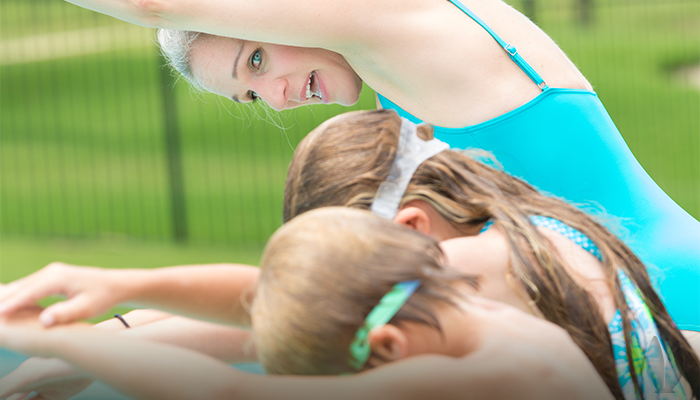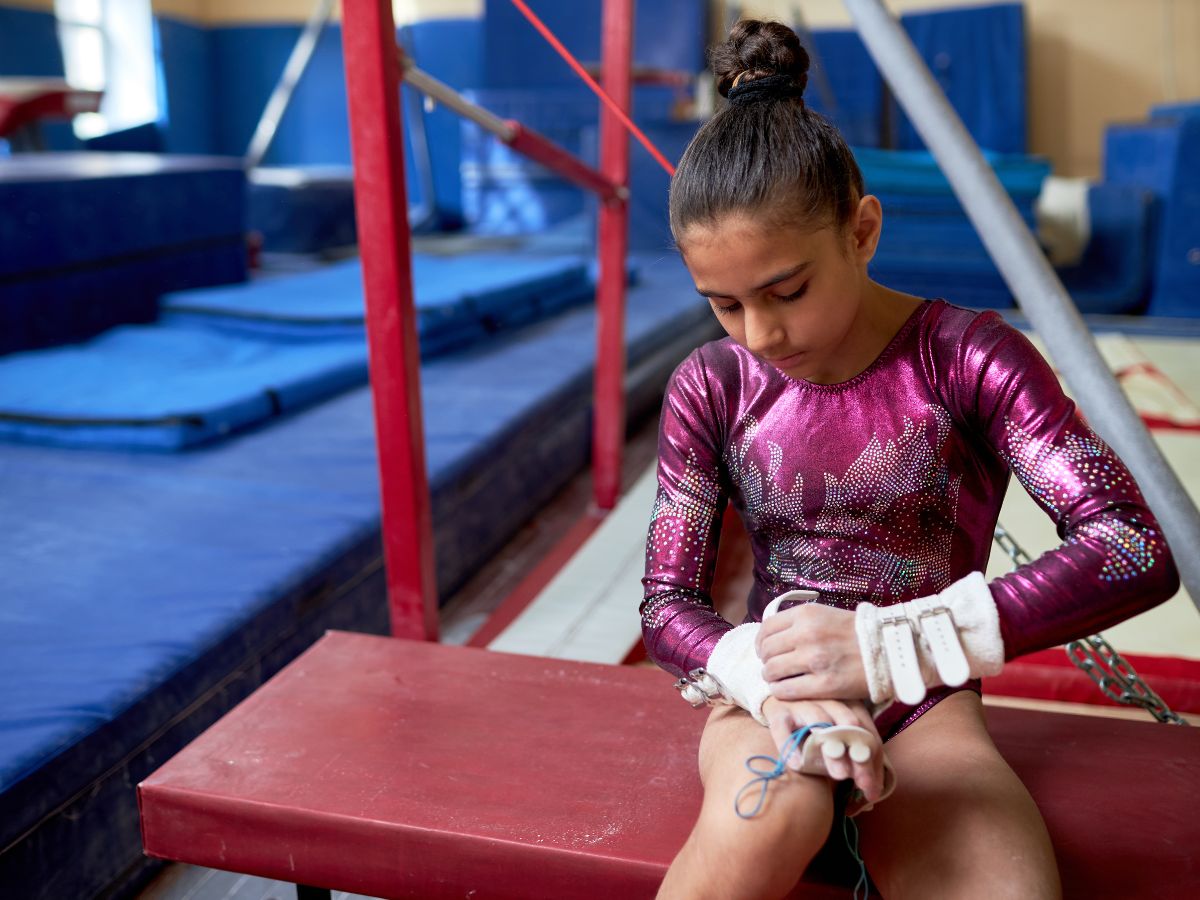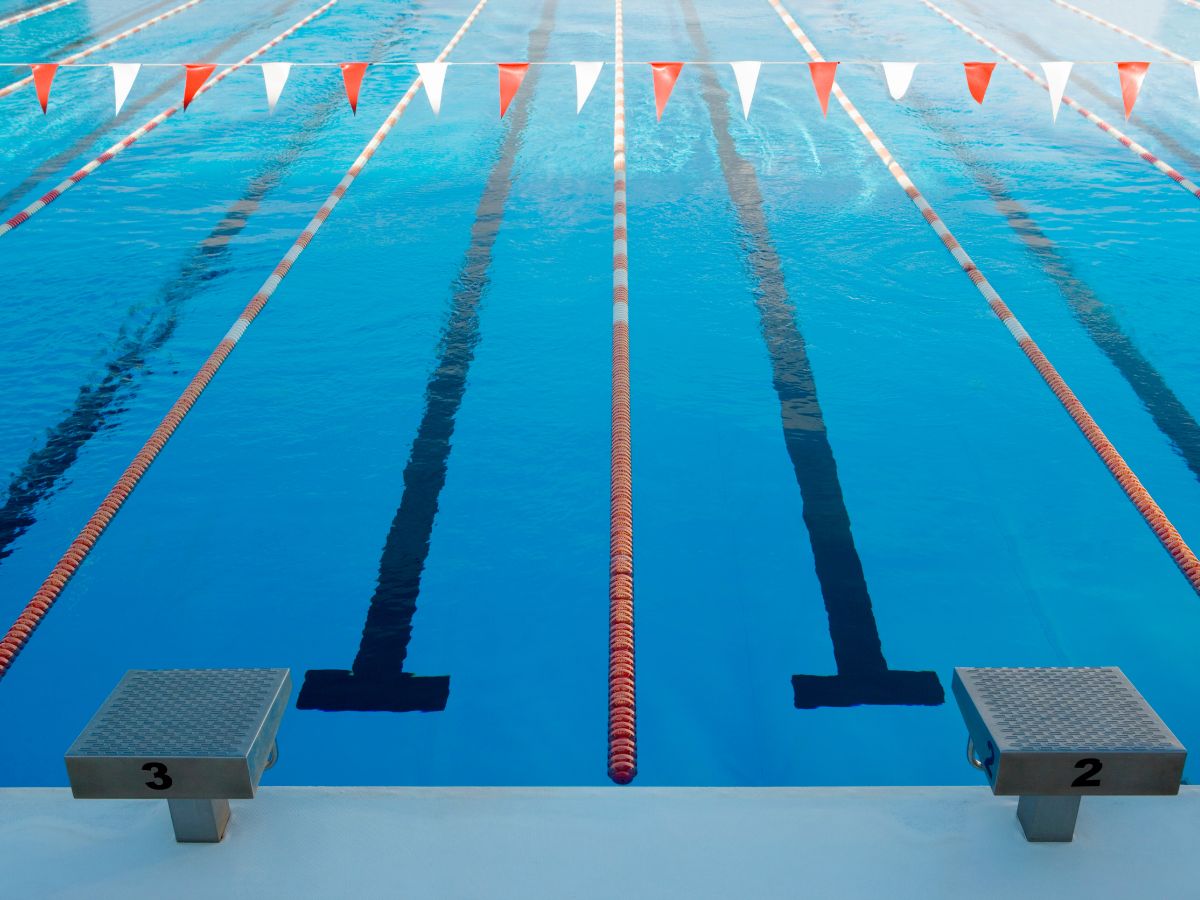Learning to dive can be challenging for many kids because it requires head-first entry into the pool. And that is at least intimidating and sometimes frightening for new swimmers. Diving is fun, effective and exhilarating and can be mastered with just a little practice.
The most important thing is to learn to dive safely.
The first point of safety in this process is to make sure the water is deep enough for diving and that other swimmers are a safe distance away from the diving area.
Severe injuries to the spinal cord can happen if safety isn’t a priority. Spinal cord injuries occur when a diver strikes his/her head on an object such as a pool or lake bottom or a submerged object. Most serious injuries involve the cervical spine (neck) in the C-5 region and are classified as compression or flexion-compression injuries.
Diving Injuries
A diver’s extended hands and arms provide the only source of protection to the head. Should the arms collapse upon impact or not be in a forward position, the head is vulnerable. Minimal force is needed to cause spinal injury especially when the neck is not in a neutral position. Most diving injuries occur with the neck in the flexed (chin toward chest) position. The diver’s weight, underwater velocity and angle of impact are major determining factors on whether impact will result in injury. The heavier the individual and the greater the velocity the more likely injury will occur. Therefore, the risk of injury is less for young (small) children than that of adults.
It is estimated that approximately 800 spinal cord injuries resulting from diving into a body of water occur each year in the United States.1 Approximately ¾ occur in the natural aquatic environment (lakes, ponds, streams, etc.) while the remaining amount occur in swimming pools. It is estimated that ninety percent of these incidents occur in water depths less than 6 feet .1,2
A review of incidents reported by local health departments to the BCSFP occurring at regulated bathing facilities in New York State from 1987-1991 indicates 30 shallow diving related injuries occurred; 15 resulted from dives in the shallow end of pools; 8 occurred at beaches; 7 resulted from starting block use (all were competitive swimmers during competition or team practice).
Diving Physics
A head first dive from a deck is comprised of several components including:
- The diver’s starting position
- Use of legs and arms which generate thrust
- In-air trajectory
- Entrance angle in water
- In-water trajectory
- The arm and head position in the water
It should be noted that a running head first dive from the deck can result in entrance velocities similar to those resulting from take-off from a one meter diving board and can project the diver further out into the pool.
When diving into shallow water very little reaction time is available between entering the water and striking the bottom. To avoid injury it is critical that the diver’s arms and hands are locked forward in a proper position that prevents head contact with the bottom and the diver must steer-up immediately by arching the back, lifting the head and aiming the hands up.
The best policy is to make sure that diving always be done in water that is confirmed as deep enough for safely diving.
Diving Safety Recommendations:
- The American Red Cross recommends a minimum of 9 feet of water depth for head first dives including dives from pool decks.3
- The National Swimming Pool Foundation (NSPF) sponsored diving research and produced a brochure in 1985 based on the results which includes numerous diving safety recommendations including:
- Don’t dive into shallow end of pools.
- Don’t run and dive.
- Don’t dive from starting blocks unless under direct supervision of a qualified coach.
- Know how to control your dive path and steer up.
- Results for a comprehensive study of diving injuries are presented in “Diving Injuries: The Etiology of 486 Case Studies with Recommendations for Needed Action” edited by Dr. Alexander Gabrielsen, Ph.D., 1990, NOVA University Press.1 A 13 member editorial panel of aquatic experts recommended:
- Posting of appropriate warning signs which includes prohibition of diving in water depths less than 5 feet.
- Proper supervision to control activities of swimmers/divers.
- Public education in swimming and diving.
- Improved regulations and standards for pool and beaches addressing design and operation issues.
Many departments of health require:
- Prohibiting head first diving in water depths less than 8 feet.
- Restricting use of starting blocks to competitive swimmers or swimmer training activities.
- Requiring every facility to develop and implement a bathing facility safety plan which must address injury prevention activities which should include diving safety.
Learn to Dive
Here are step-by-step instructions for learning to dive:
Start with a sitting dive. The sitting dive allows the diver to get comfortable entering the water headfirst from a close distance to the surface.
- Sit at the edge of the pool with feet in the water and against the wall.
- Put arms up straight, hands together. (Make sure elbows touch the ears.)
- Bend the upper body forward and downwards so arms are close to the water.
- Lean forward, fingers stretched and push off the wall of the pool with feet, making sure fingers enter before the rest of the upper body. (Do this a few times to make sure entry is smooth.)
Progress to a kneeling dive. Once comfortable with a sitting dive, it’s best to transition to a kneeling dive.
- Take a position as close to the edge of the pool as possible.
- Crouch on one knee resting it on the deck while, placing the toes of the lead foot at the pool’s edge.
- Keep arms straight ahead and head down. Remember to stretch out hands.
- Lean forward slowly, pushing with feet against the pool’s edge, entering the water fingers first.
Finally – stand and learn to dive from your feet. If comfortable with a kneeling dive, adding more height shouldn’t be difficult.
- Stand with feet together, toes curled over the edge of the pool.
- Place arms straight above the head, touching ears with arms.
- Bend the knees slightly, and stay relaxed so they don’t slap the water.
- Tuck the chin, bend at the waist, and push off with the feet into the water – fingers first.
This method can also be practiced from a diving board.
Next? Practice. Good practice makes perfect. If limbs slap the water, or the result is a belly flop, it’s a fluke. Keep practicing until there is consistency and comfort in diving.
Sources and References:
- Diving Injuries: The Etiology of 486 Case Studies with Recommendations for Needed Actions. M. Alexander Gabrielsen, Ph.D. 1990.
- Diving Safety in Swimming Pools. A Report to the National Swimming Pool Foundation. Richard Stone. 1980.
- American Red Cross Basic Water Safety, Washington, D.C., 1988.
- Starting Blocks: The Etiology of 30 Spinal Cord Injuries As a Result of Dives Made form Starting Blocks with Recommendations. M. Alexander Gabrielsen, Ph.D., and Stanley M. Shulman, MA, Feb. 1992







